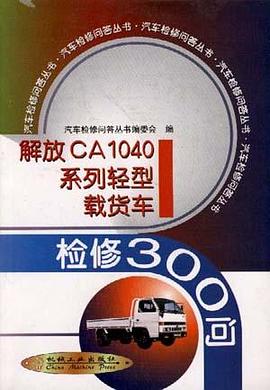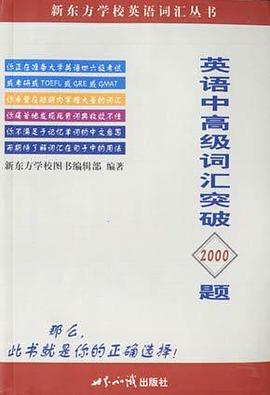BriefContents
PARTONETH EWO RLDO FFINAN NCE
Chapter1: Financeandth eFirm
Chapter2:FinancialMarketsandlnterestRates
Chapter3:Financiallnstitutions
PART TWO:ESSENTIALCONCEPTSINFINANCE
Chapter4:RevievvofAccounting
Chapter5: Analys isof Financial St at em ent s
Chapter6:FOrecastingforFinancialPlanning
Chapt8r7:RiskandReturn
Chapt er 8: TheTi meVa lueof M oney
Chapter9:BondandStockValuation
PART THREE:LONG-TERMFINANCIALMANAGEMENTKECISIONS
Chapter10:CapitalBudgetingDeCisionM ethods
Chapter11 :Es tim at in gIn cre m ent al Ca sh flow s
Chapter12:TheCostofCapital
Chapter13:CapitalStructureBasics
Chapter14:CorporateBonds, PreferredStock,
andLeasing
Chapter15:Com m onStock
Chapter16:DiVidendPolicy
PART FOUR:SHOR-TERMFINANCIALMANAGANAGEMENTDECISIONS
Chapter17:W orkingCapitalPolicy
Chapter18:ManagingCash
Chapter19:Accounts ReceiVableandInventory
Chapter20:Short-Term Financing
PART FIVE:FINANCEINTHEGLOBALECONOMY
Chapter21:InternationalFinance
xvn
xxvii
Preface
About the Authors
PART ONE
THE WORLD OF FINANCE
Chapter 1: Finance
and the Firm
The Field of Finance
Finance Career Paths
Financial Management
The Role of the Financial Manager
TheBasicFinancialGoaloftheFirm
In Search ofValue
Finance at Work: Melanie Rosen.
Electronic Media, The New York
Times
Legal and Ethical Challenges
in Financial Management
Agency Issues
The Interests of Other Groups
The Interests of Society as a Whole
Forms of Business Organization
The Proprietorship
The Partnership
The Corporation
What's Next
Summary
Self-Test
Review Queslions
Build Your Communication Skills
Answers to Self- Test
Chapter 2: Finandal Markets
and Interest Rates
The Financial System
Securities
Financial Intermediaries
Financial Markets
The Primary Market
The Secondary Market
The Monev Market
The Capital Market
Security Exchanges
The Over-the-Counter (OTC) Market
Market Efficiency
Securities in the Financial
Marketplace
Securities in the Money Market
Ethical Connections: The Dog Ate My
Investment
Securities in the Capital Market
Financial Management and You: How to
BuyTreasury Securities without Using a
Broker
Interest
Determinants of Interest Rates
The Yield Curve
What's Next
Summary
Self-Test
Review Questions
Build Your Communication Skills
Problems
Answers to Self-Test
Chapter 3: Finandal
Institutions
Financial Intermediation
Denomination Matching
Absorbing Credit Risk
Commercial Banks
Bank Regulation
Commercial Bank Operations
Ethical Connections: How Ethical Is Your
Financial Institution?
The Federal Reserve System
Organization of the Fed
Controlling the Money Supply
The Discount Window
Savings and Loan Associations
Legislation Affecting S&Ls
Regulation ofS&Ls
Mutual Companies versus Stockholder
Owned Companies
The Problem ot Matching Loan
and Deposit Maturities
S&Ls' Real Assets ,
Credit Unions
The Common Bond Requirement
Members as Shareholders
Credit Unions Compared to Banks
Credit Union Regulation
Finance Companies, Insurance
Companies, and Pension Funds
Types of Finance Companies
Insurance Companies
Financial Management and You: The
Social Security System
What's Next
Summary
Self-Test
Review Questions
Build Your Communication Skills
Answers to Self-Test
PART TWO
ESSENTIAL CONCEPTS
IN FINANCE
Chapter 4: Review
of Accounting
Review ofAccounting
Fundamentals
Basic Accounting Financial
Statements
The Income Statement
Ethical Cunnections: Box Office Hits-
Who Profits?
The Balance Sheet
The Statement of Cash Flows
Depreciation
Calculating the Amount of
Depreciation Expense
Income Taxes
Financial Management and You: Your
Personal Tax Rates
What's Next
Summary
Self-Test
Review Questions
Build Your Communication Skills
Problems
Answers to Self-Test
Chapter 5: Analysis
of Financial Statements
Assessing Financial Health
Misleading Numbers
Financial Ratios
The Basic Financial Ratios
Calculating the Ratios
Finance at Work: Lee Anne Schuster,
Kitchell Contractors, Marketing
Trend Analysis and Industry
Comparisons
Trend Analysis
Industry Comparisons
Summary Analysis: Trend
and Industry Comparisons
Together
Locating Information about
Financial Ratios
What's Next
Summary
Equations Introduced in This Chapter
Self-Test
Review Questions
Build Your Communication Skills
Problems
Answers to Self-Test
Chapter 6: Forecasting
for Financial Planning
Why Forecasting Is Important
Forecasting Approaches
Why Forecasts Are Sometimes Wrong
Forecasting Sales
Forecasting Financial Statements
Budgets
Producing Pro Forma Financial
Statements
Finance at Work: Keith Ender, Customer
Service Representative, James River Paper
Company
Analyzing Forecasts for Financial
Planning
What's Next
Summarv
Self-Test
Review Questions
Build Your Communication Skills
Problems
Answers lo Self- Tesl
Chapter 7: Risk
and Return
Risk
Risk Aversion
The Risk-Return Relationship
Measuring Risk
Using Standard Deviation to Measure
Risk
Using the Coefficient ofVariation
to Measure Risk
The Types of Risks Firms
Encounter
Business Risk
Financial Risk
Portfolio Risk
Dealing With Risk
Risk-Reduction Methods
Compensating for the Presence
of Risk
Financial Management and You: Mutual
Funds and Risk
What's Next
Summary
Equations Introduced in This Chapter
Self-Test
Review Questions
Build Your Communication Skills
Problems
Answers to Self- Test
Chapter 8: The Time Value
of Money
Why Money Has Time Value
Measuring the Time Value
of Money
The Future Value of a Single Amount
The Sensitivity of Future Values to
Changes in Interest Rates or the
Number of Compounding Periods
The Present Value of a Single
Amount
The Sensitivity of Present Values
to Changes in k and n
Working with Annuities
Future Value of an Ordinary Annuity
The Present Value of an Ordinary
Annuity
Ethical Connections: When a Million Isn't
a Million. Taking a Chance on the Time
Value of Money
Future and Present Values cf
Annuities Due
Perpetuities
Present Value of an Investment
with Uneven Cash Flows
Special Time Value of Money
Problems
Finding the Interest Rate
Finding the Number of Periods
Solving for the Payment
Compounding More than Once
per Year
What's Next
Summary
Equations Introduced in This Chapter
Self-Test
Review Questions
Build Your Communication Skills
Problems
Answers to Self- Test
Chapter 9: Bond and Stock
Valuation
The Importance of Bond and
Stock Valuation
A General Valuation Model
Bond Valuation
Semi-Annual Coupon Interest Payments
The Yield to Maturity of a Bond
The Relationship Between Bond
YTM and Price
Preferred Stock Valuation
Finding the Present Value of Preferred Stock
Dividends
The Yield on Preferred Stock
Common Stock Valuation
Common Stock Going Concern Valuation
Models
Balance Sheet Valuation Approaches
Deciding Which Stock Valuation
Approach to Use
The Yield on Common Stock
What's Next
Snmmary
Equations Introduced in This Chapter
Self-Test
Review Questions
Build Your Communication Skills
Problems
Answers to Self-Test
Appendix 9A: Common Stock Valuation:
Supernormal Growth
PART THREE
LONG-TERM
FINANCIAL MANAGEMENT
DECISIONS
Chapter 10: Capital
Budgeting Decision
Methods
The Capital Budgeting Process
Decision Practices
Types of Projects
Capital Budgeting Cash Flows
Stages in the Capital Budgeting Process
Capital Budgeting Decision
Methods
The Payback Method
The Net Present Value (NPV) Method
The Internal Rate of Return (IRR)
Methbd
Problems with the IRR Method
Conflicting Rankings between the
NPV and IRR Methods
Capital Rationing
Finance at Work: Jim Bruner. Former
Maricopa County Supervisor, State of
Arizona
Risk and Capital Budgeting
Measuring Risk in Capital Budgeting
Adjusting for Risk
What's Next
Summary
Equations Introduced in This Chapter
Self-Test
Review Questions
Build Your Communication Skills
Problems
Answers to Self-Test
Appendix IOA: Wrinkles in Capital
Budgeting
Non-Simple Projects
Multiple IRRs
Mutually Exclusive Projects
with Unequal Project Lives
Comparing Projects with Unequal
Lives
Equations Introduced in This Appendlx
Chapter 11: Estimating
Incremental Cash Flows
Incremental Cash Flows
Types of Incremental Cash
Flows
Initial Investment Cash Flows
Operating Cash Flows
Cash Flows at the End of a Project's
Life
Incremental Cash Flows of an
Expansion Project
Financial Management and You: The
Incremental Costs of Studying Abroad
An Asset Replacement Decision
Financing Cash Flows
What's Next
Summary
Self-Test
Review Questions
Build Your Communication Skills
Problems
Answers to Self-Test
Chapter 12: The Cost
of Capital
The Cost of Capital
Sources of Capital
The Cost of Debt
The Cost of Preferred and Common
Stock Funds
The Weighted Average Cost of
Capital (WACC)
The Marginal Cost of Capital
(MCC)
Finance at Work: Interview with
Fred Higgins: Minit Mart Foods. Inc
CEO
The Firm's MCC Schedule
The IVICC Schedule and Capital
Budgeting Decisions
The Optimal Capital Budget .306
The Importance of MCC to Capital
Budgeting Decisions
What's Next
Summarv
Eqiuations Introduced in This Chapter
Self-Test
Review Qnestions
Build Your Communication Skills
Problems
Answers to Self-Tes!
Chapter 13: Capital
Structure Basics
Breakeven Analysis and
Leverage
Constructing a Sales Breakeven
Chart
Applying Breakeven Analysis
Leverage
Operating Leverage
Financial Leverage
Combined Leverage
LBOs
Ethical Connections: Et Tu, Wilson?
Capital Structure Theory
Tax Deductibilitv of Interest
Modigliani and Miller
Toward an Optimal Capital Structure
What's Next
Summary
Equations Introduced in This Chapter
Self-Test
Review Qnestions
Build Yuur Communication Skills
Problems
Answers to Self-Test
Chapter 14: Corporate
Bonds, Preferred Stock,
and Leasing
Bond Basics
Features of Bond Indentures
Security
Plans for Paying off the Bond Issue
Call Provisions
Restrictive Covenants
The Independent Trustee of the Bond
Issue
Types of Bonds
Secured Bonds
Unsecured Bonds (Debentures)
Convertible Bonds
Variable Rate Bonds
Putable Bonds
Junk Bonds
International Bonds
Ethical Connections: Repealing a Subsidy
Generates Trash Talk
Super Long-Term Bonds
Preferred Stock
Preferred Stock Dividends
Preferred Stock Investors
Leasing
Genuine Leases versus Fakes
Operating and Financial (Capital) Leases
Lease or Buy?
What's Next
Summary
Equations Introduced in This Chapter
Self-Test
Review Questions
Build Your Communication Skills
Problems
Answers to Self-Test
Appendix 14A: Bond Refunding
A Sample Bond Refunding
Problem
Chapter 15: Common
Stock
The Characteristics of Common
Stock
Stock Issued by Private Corporations
Stock Issued by Publicly Traded
Corporations
Finance at Work: Chris Heller. Corporate
Communications Consultant
Institutional Ownership of Common
Stock
Voting Rights of Common
Stockholders
Proxies
Board of Directors Elections
The Pros and Cons of Equity
Financing
Disadvantages of Equity Financing
Advantages of Equity Financing
Issuing Common Stock
The Function of Investment Bankers
Pricing New Issues of Stock
Rights and Warrants
Preemptive Rights
Warrants
What's Next
Summarv
Equations Introduced in This Chapter
Self-Tesl
Review Queslions
Build Your Communication Skills
Probltms
Answers to Self- Test
Chapter 16: Dividend
Policy
Dividends
Why a Dividend Policy Is
Necessary
Factors Affecting Dividend
Policy
Need For Funds
Management Expectations and
Dividend Policy
Stockholders' Preferences
Restrictions on Dividend Payments
Cash versus Earnings
Leading Dividend Theories
The Residual Theory of Dividends
The Clientele Dividend Theory
The Signaling Dividend Theory
The Bird-in-the-HandTheory
Modigliani and Miller's Dividend Theory
The Mechanics of Paying
Dividends
Financal IVIanagement and You:
Dividend Reinvestment Records Can
Avoid Tax Headaches
Dividend Reinvestment Plans
Alternatives to Cash Dividends 400
Stock Dividends and Stock Splits
What's Next
Summary
Equalions Introduced in This Chapler
Self-Test
Review Questions
Bnild Your Communication Skills
Problems
Answers to Self-Test
PART FOUR
SHORT-TERM
FINANCIAL MANAGEMENT
DECISIONS
Chapter 17: Working
Capital Policy
Managing Working Capital
Why Businesses Accumulate
Working Capital
Fluctuating Current Assets
Permanent and Temporary Current
Assets
Liquidity versus Profitability
Establishing the Optimal Level
of Current Assets
Managing Current Liabilities:
Risk and Return
Three Working Capital Financing
Approaches
The Aggressive Approach
The Conservative Approach
The Moderate Approach
Working Capital Financing and
Financial Ratios
What's Next
Finance at Work: Interview with Michael
Coleman.Vice President ofTek Soft 420
Summary
Self-Test
Review Questions
Build Your Communication Skills
Problems
Answers to Self-Test
Chapter 18: Managing
Cash
Cash Management Concepts
Determining the Optimal Cash
Balance
The Minimum Cash Balance
The Maximum Cash Balance
Determining the Optimal Cash
Balance
Finance at Work: Karen Noble,
Professional Golfer
Forecasting Cash Needs
Developing a Cash Budget
Managing the Cash Flowing in
and out of the Firm
Increasing Cash Inflows
Decreasing Cash Outflows
Speeding Up Cash Inflows
Slowing Dbwn Cash Outflows
What's Next
Summary
Equations Introduced in This Chapter
Self-Test
Review Questions
Build Your Communication Skills
Problems
Answers to Self-Tesl
Chapter 19: Accounts
Receivable and
Inventory
Why Firms Accumulate Accounts
Receivable and Inventory
How Accounts Receivable and
Inventory Affect Profitability
and Liquidity
Finding Optimal Levels of
Accounts Receivable and
Inventory
The Optimal Level ofAccounts
Receivable
The Optimal Level of Inventory
Inventory Management
Approaches
The ABC Inventory Classification
System
Just-in-Time Inventory Control (JIT)
Making Credit Decisions
Collection Policies to Handle
Bad Debts
Finance at Work: Joann K. Jones, CEO of
Capital Electric Supply
What's Next
Summary
Equations Introduced in This Chapter
Self-Test
Review Questions
Build Your Communication Skills
Problems
Answers to Self-Test
Chapter 20: Short-Term
Financing
The Need for Short-Term
Financing
Short-Term Financing versus
Long-Term Financing
Short-Term Financing
Alternatives
Short-Term Loans from Banks
and Other Institutions
Trade Credit
Commercial Paper
How Loan Terms Affect
the Effective Interest Rate
of a Loan
The Effective Interest Rate
Discount Loans
Compensating Balances
Loan Maturities Shorter than One
Year
A Comprehensive Example
Computing the Amount to Borrow
Collateral for Short-Term Loans
Accounts Receivable as Collateral
Inventory as Collateral
Financial Management and You: Easy
Come. Easy Go:The Cost of Credit
What's Next
Summary
Equations Introduced in This Chapter
Self-Test
Review Questions
Build Your Communication Skills
Problems
Answers to Self-Test
PART FIVE
FINANCE IN THE GLOBAL
ECONOMY
Chapter21: International
Finance
Multinational Corporations
Financial Advantages of Foreign
Operations
Ethical Issues Facing Multinational
Corporations
Comparative Advantage
Exchange Rates and Their
Effects
Fluctuating Exchange Rates
Cross Rates
Exchange Rate Effects on MNCS
Exchange Rate Et'fects on Foreign
Stock and Bond Investments
Managing Risk
Hedging
Diversification Benefits of Foreign
Investments
American Depositorv Receipts
Finance At Work: Interview with Don
Burton, International [mport-Export
Institute
Exchange Rate Theories
Purchasing Power Parity Theory
International Fisher Effect
Interest Rate ParityTheory
Other Factors Affecting Exchange
Rates
Government Intervention in Foreign
Exchange Markets
Political and Cultural Risks
Facing MNCs
Political Risk
Cultural Risk
International Trade Agreements
NAFTA
GATT
European Union
Free Trade versus Fair Trade
Summary
Equations Introduced in This Chapter
Self-Test
Review Questions
Build Your Communication Skills
Problems
Answers to Self-Test
Glossary
Index
· · · · · · (
收起)






















